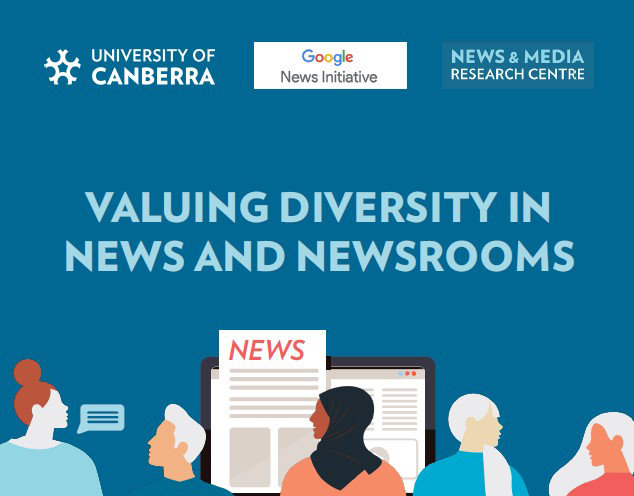Valuing Diversity in News and Newsrooms

AUSTRALIAN NEWS INDUSTRY BEGINNING TO ADDRESS DIVERSITY, BUT DISCRIMINATION AND BARRIERS CONTINUE TO BE A PROBLEM
[DOWLOAD THE REPORT]
The findings from this report suggest that news organisations are beginning to implement diversity and inclusion policies on a wide scale. However, journalists we surveyed and interviewed expressed dissatisfaction with the way these policies were being implemented. Many reported that the industry was doing a poor job at giving voice to the underrepresented and providing fair and adequate coverage for all ethnic or cultural groups. They were also critical of a lack of diversity among senior leadership, reporting that discrimination and career road-blocks remained common for women and those from culturally diverse backgrounds.
Audiences were split on the issue of diversity in news content. Older and left-leaning Australians were quite critical of the industry’s performance, while younger, right-wing, and recent migrants held more positive views. Women were more likely to say the news was doing a poor job of representing their gender, and those from culturally and linguistically diverse backgrounds had more positive views about news from their cultural communities compared to mainstream news in general.
The findings overall suggest that changes in the industry, as well as in audience perceptions, are happening slowly and unevenly. This is a reminder that professions and communities in Australia are rich with difference and cannot be tied to a single identity. The lesson for news organisations is that a one-size-all approach to diversity is unlikely to succeed. But among the journalists we spoke to there was a general consensus that change was necessary for the future success of the industry.
AUDIENCE KEY FINDINGS
- 46% of Australians say that the news is doing a good job with gender diversity as well as ethnic and cultural diversity. But only 35% say they are doing a good job with diversity from less advantaged backgrounds.
- When asked if men, women and non-binary people are all treated equally 41% agree and 38% disagree.
- 52% of culturally and linguistically diverse respondents say news from their community is relevant to their interest, compared to only 44% who say news in general is relevant to them.
- Recent migrants (less than 5 years in Australia) are more likely to agree that news outlets reflect a range of views (57%) and give equal time to all perspectives (46%) compared to long-term migrants (more than 15 years) (41%, 31%).
- Aboriginal and Torres Strait Islanders are least likely to say news organisations are doing a good job of giving voice to the underrepresented (44%) compared to other backgrounds.
- Among women only 47% say they are covered fairly and there is enough coverage relevant to women in news, compared to 59% of men.
JOURNALIST KEY FINDINGS
- 87% of journalists we surveyed say that news media needs to work on improving diversity ‘somewhat’ or ‘a great deal’.
- More than half of journalists say their newsroom has policies relating to language use regarding ethnically diverse communities (52%) and someone in charge of diversity, equity and inclusion (52%).
- However, less than half (47%) say they have taken part in training on issues of diversity and inclusion in the workplace in the last 12 months.
- Only 23% say their organisation is doing a good job with employee diversity at senior levels, compared to 67% when looking at junior levels.
- Over two-thirds (64%) say most news organisations are doing a bad job of reporting on stories fairly based on the ethnic or cultural background of those involved.
- Almost one in three (30%) say they have experienced discrimination on the basis of their gender in the newsroom, and 38% say there are barriers to career progression because of gender.
- 43% of journalists say there are barriers when applying for a job in their news organisation because of people’s cultural or ethnic backgrounds.

